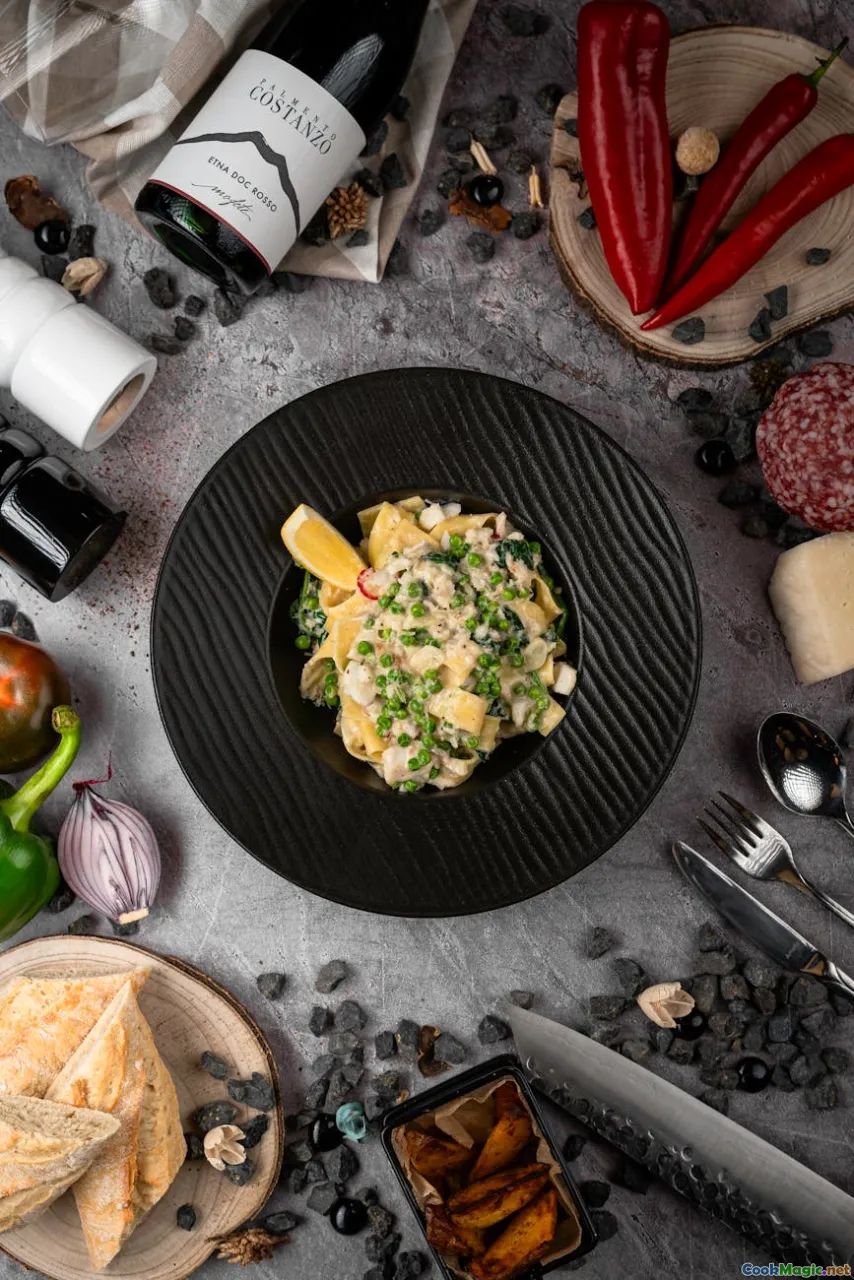Exploring Authentic Jamaican Flavors
8 min read Dive into the vibrant world of Jamaican cuisine, exploring iconic flavors, traditional dishes, and the cultural richness behind every bite. April 30, 2025 03:55
Exploring Authentic Jamaican Flavors
Introduction: A Culinary Journey into Jamaica's Heart
Imagine walking through the bustling streets of Kingston at sunset, where the air is thick with the aroma of smoky spices, grilling meats, and fresh herbs. The vibrant colors of roadside jerk stands beckon, promising a burst of flavors that tell stories of history, resilience, and joy. Jamaican cuisine is more than just food—it's a cultural tapestry woven with centuries of tradition, island ingenuity, and a fiery passion for bold, authentic flavors. Embarking on a journey to explore these flavors is to immerse oneself in a sensory adventure that captures the very soul of Jamaica.
The Cultural Roots of Jamaican Flavors
Jamaican cuisine is a reflection of its diverse history. The island's culinary palette has been shaped by indigenous Taino influences, African traditions brought by enslaved peoples, European colonial legacies, and Asian immigrant contributions. This melting pot of cultures gives Jamaican food its unique complexity.
Indigenous Ingredients and Early Influences
Long before European contact, the Taino people cultivated yams, sweet potatoes, cassava, and peppers. Their influence persists in dishes like callalooandfestival (a type of fried bread). When Europeans arrived, they introduced livestock and spices, which soon became staples.
African Heritage and Spices
The African roots are deeply embedded in the island's flavor profiles. Techniques like slow cooking and the use of bold spices—especially allspice (called 'pimento' locally), ginger, and Scotch bonnet peppers—are African legacies. These ingredients lend Jamaican dishes their characteristic heat and depth.
European and Asian Contributions
The British colonizers introduced methods of preserving meat, such as smoking and curing, which evolved into the iconic jerk style. Indian indentured servants brought curry spices and cooking techniques that are subtly integrated into Jamaican dishes.
Iconic Dishes and Flavors
To truly understand Jamaican flavors, one must taste its signature dishes—each a story in itself.
Jerk: The Spirit of Jamaica
No exploration of Jamaican cuisine is complete without jerk. This method involves marinating meats—most famously chicken and pork—in a fiery blend of Scotch bonnet peppers, allspice, thyme, garlic, and other herbs, then slow-smoking over pimento wood.
The result is a smoky, spicy, and tender meat with a slightly charred exterior. Walking through a Jamaican street fair, the scent of jerk grilling is almost hypnotic—an intoxicating combination of heat, smoke, and spice.
Ackee and Saltfish
Jamaica’s national dish, ackee and saltfish, is a savory symphony of flavors and textures. The creamy, tender ackee fruit, reminiscent of scrambled eggs, pairs perfectly with salted cod that has been soaked and cooked to perfection.
Spiced with onions, peppers, and a touch of black pepper, this dish is often served with fried plantains, dumplings, or fried bread called festivals. It’s a breakfast staple that embodies the island’s resourcefulness and flavor richness.
Curried Goat
Influenced by Indian curry, curried goat is a hearty, spicy dish simmered with turmeric, cumin, and allspice. The meat becomes meltingly tender, absorbing the complex spice blend, and is traditionally served with rice and peas.
Callaloo and Vegetables
Green leafy vegetables like callaloo are cooked with garlic, onions, and Scotch bonnet peppers, creating a flavorful side that complements the richer dishes.
The Spirit of Spices and Herbs
Jamaican cuisine is distinguished by its vibrant spice profiles. The key ingredients include:
- Allspice (Pimento): The backbone of jerk, offering warmth and depth.
- Scotch Bonnet Peppers: The fiery heat that defines the island’s spice level.
- Thyme: Fresh and aromatic, essential in marinades.
- Ginger: Adds a zesty kick and aroma.
- Garlic and Onions: The foundational flavor layers.
- Curry Powder: A blend of turmeric, coriander, cumin, and fenugreek.
These ingredients are often combined into marinades, rubs, and stews that are the crux of Jamaican cooking.
Cooking Techniques That Define the Cuisine
Jamaican culinary techniques emphasize slow cooking, smoking, and marinating, which enhance flavor and tenderness.
Jerk Cooking
The hallmark of Jamaican grilling, jerk involves marinating meats in a spicy, aromatic mixture, then cooking over pimento wood or charcoal to impart a smoky flavor.
Stewing and Simmering
Many dishes, such as curried goat or oxtail stew, are slow-cooked to develop rich flavors and tender meat.
Frying and Baking
Fried foods like festivals and yam fries are common, offering crispy textures that contrast with softer dishes.
Personal Reflections and Cultural Significance
My personal encounters with Jamaican food have been transformative. The first time I tasted authentic jerk chicken, the explosion of smoky, spicy flavors transported me to a Caribbean street festival. The warmth of the spices, the tenderness of the meat, and the convivial atmosphere made me realize that Jamaican cuisine is as much about community and history as it is about flavor.
Food in Jamaica is a celebration—be it a casual street-side jerk stand or a family gathering with a pot of curry. It’s a reflection of resilience, creativity, and the island’s unyielding spirit.
Where to Experience Authentic Jamaican Flavors
While traveling to Jamaica offers the most immersive experience, many cities worldwide now host Jamaican restaurants and festivals. Look for places serving jerk, ackee, and saltfish, and don’t hesitate to ask about traditional cooking methods.
Conclusion: Embrace the Flavors
Exploring Jamaican cuisine is like embarking on a vibrant voyage through history, culture, and passion. It’s a symphony of spices, textures, and stories that invites you to taste the resilience of an island that has thrived through its rich, authentic flavors. Whether you’re grilling jerk at home or savoring a plate of curried goat, remember—you’re partaking in a tradition that spans centuries and connects generations.
So, spice up your culinary repertoire and let Jamaica’s bold flavors inspire your cooking adventures. The island’s soul is in its food, and every bite is a celebration of life itself.









